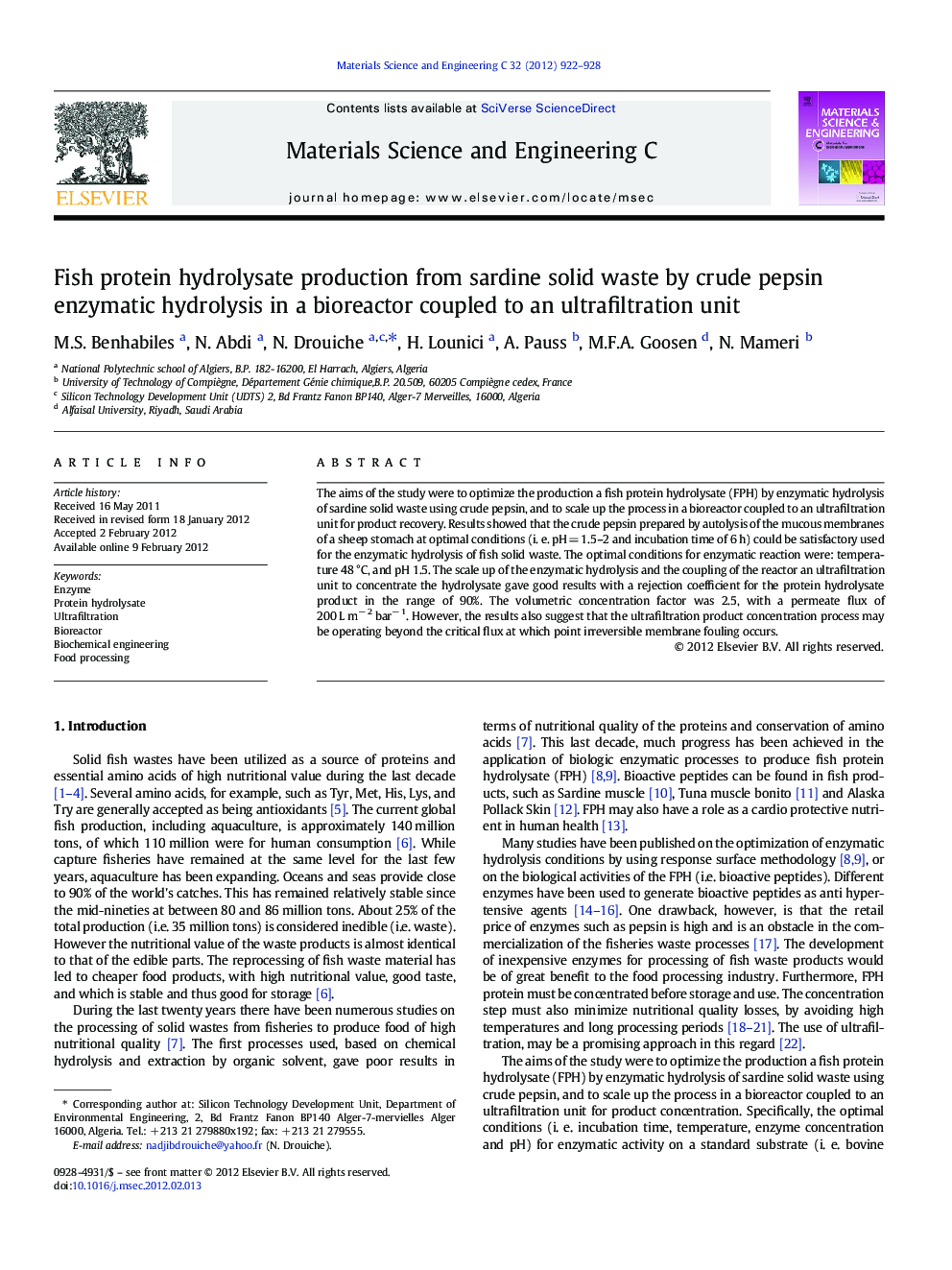| Article ID | Journal | Published Year | Pages | File Type |
|---|---|---|---|---|
| 1429646 | Materials Science and Engineering: C | 2012 | 7 Pages |
The aims of the study were to optimize the production a fish protein hydrolysate (FPH) by enzymatic hydrolysis of sardine solid waste using crude pepsin, and to scale up the process in a bioreactor coupled to an ultrafiltration unit for product recovery. Results showed that the crude pepsin prepared by autolysis of the mucous membranes of a sheep stomach at optimal conditions (i. e. pH = 1.5–2 and incubation time of 6 h) could be satisfactory used for the enzymatic hydrolysis of fish solid waste. The optimal conditions for enzymatic reaction were: temperature 48 °C, and pH 1.5. The scale up of the enzymatic hydrolysis and the coupling of the reactor an ultrafiltration unit to concentrate the hydrolysate gave good results with a rejection coefficient for the protein hydrolysate product in the range of 90%. The volumetric concentration factor was 2.5, with a permeate flux of 200 L m− 2 bar− 1. However, the results also suggest that the ultrafiltration product concentration process may be operating beyond the critical flux at which point irreversible membrane fouling occurs.
► Evaluating to produce a (FPH) by enzymatic hydrolysis of sardine solid wastes was achieved. ► Investigation of key parameters for optimal conditions for enzymatic hydrolysis have been studied. ► Valorization of sardine waste was realized by enzymatic hydrolysis process. ► Performances of this enzyme gave comparable results to those obtained with commercial pepsin. ► The nutritional quality of the FPH produced appears to be satisfactory.
